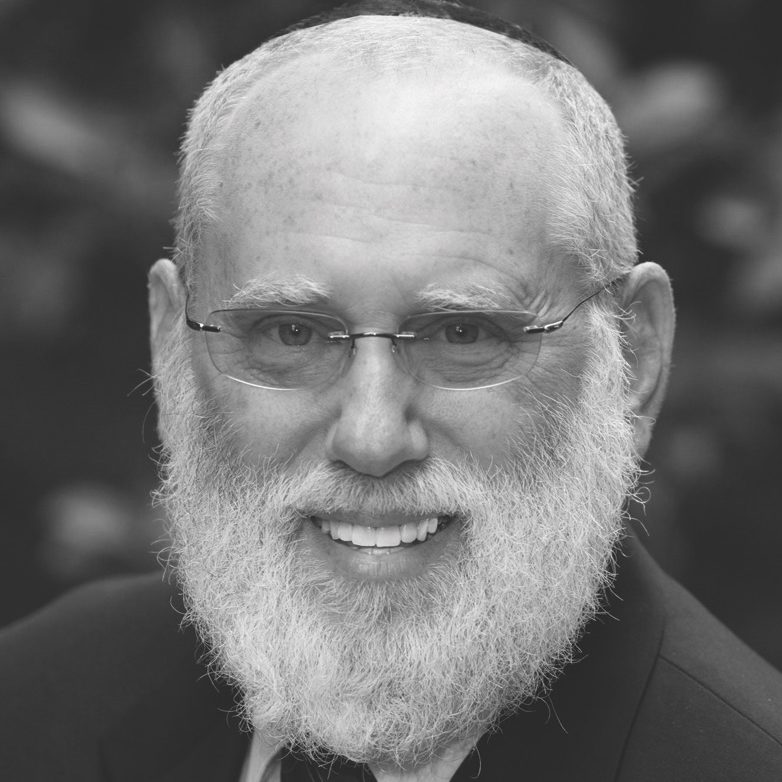It was Sunday afternoon, July 6, 2003, and I was approaching the end of a successful three-week mission to Israel dedicated to responding to a new wave of missionary activity. In addition to lectures, news interviews and meetings with government officials, my colleagues and I distributed thousands of copies of a new Hebrew version of Jews for Judaism’s counter-missionary handbook “The Jewish Response To Missionaries.” That day I was traveling by car, with my wife, Dvora, and our son, from the northern town of Tsfat to Tel Aviv.
Around 4 p.m. we decided to take a rest stop. Just before the Zikhron Ya’akov interchange, we exited Highway 70 and pulled up to a small restaurant located about 50 feet from the highway. As we exited our vehicle we heard the sound of screeching tires and turned toward the highway to witness a horrific accident. A white taxi traveling at high speed ran straight into a pedestrian who was walking along the side of the highway. I saw and heard the impact, and watched as the pedestrian was thrown into the air and did a complete somersault over the car, landing on the pavement headfirst.
I’ve been police chaplain for more than 10 years with the Los Angeles County Sheriff’s Department, the Los Angeles Airport Police and the LAPD and have responded to numerous crisis situations. I’m also trained in first aid, CPR, crisis counseling and advanced critical incident stress management. Within seconds, my years of training kicked in and I helped take control of the situation.
People around me were staring in shock and disbelief. I yelled to them to call for help. My command shook them out their stupor and some immediately ran inside the restaurant and called for emergency services.
I turned my attention back to the highway and ran the 50 feet, jumped the guardrail and kneeled next to the victim. The 14-year-old girl was lying motionless on her side with blood pouring from the back of her head and mouth. I was joined by Danny Eitan, a retired paratrooper and officer of the Israeli army, who had been driving in the opposite direction when he witnessed the accident. Together, we checked for breathing and a pulse. Once we realized both breathing and circulation were absent, we started CPR. Danny opened the airway and handled the breathing and I started chest compressions.
Each time I finished the chest compressions I shouted “od paam” (“again”) to Danny, indicating that he should give her two breaths. This continued for about four repetitions until we revived her.
I did a physical assessment for additional body damage and did not notice any other major external bleeding. A doctor visiting the country arrived on scene. I then turned my attention to the victim’s three friends who were standing by the side of the highway, shaking uncontrollably and crying. I removed them from the accident scene and took them inside the restaurant, had them sit down, supplied them with cold water and offered words of hope. After finding out the victim’s first name, “Hadas,” I offered a brief prayer and left her friends under the supervision of my wife — a licensed therapist.
Since it was extremely warm outside, we wanted to shield the victim from the sun. I requested that some form of material be brought to the side of the victim and a makeshift canopy was erected out of a large cardboard box.
Returning to the victim’s side, I held her head in my hands to prevent further trauma. She kept trying to pull my hand away, but with the help of several individuals who held her arms I stabilized her head and neck. Using her first name we spoke reassuring words of encouragement until the ambulance arrived.
Hadas was taken to a hospital in Hadera where they treated her internal injuries. She was then transferred to a Tel Aviv trauma center for her head injuries. After four days of treatment, she was listed as “out of danger” and is expected to make a full recovery.
Thanks to my training I was able to react professionally, but it was more than training that saved her life.
After the ambulance took Hadas to the hospital, Danny turned to me and said, “I wasn’t supposed to be in this spot at this time.”
I told him that in a million years I wouldn’t have expected to be here either — the “shortcut” given to me that morning took me on nine different highways until I reached the accident site.
I shared with Danny – who is not religious – the words of the Baal Shem Tov,
concerning divine providence and how “the footsteps of men are established
by God.” As we embraced in the middle of the road, we cried knowing that God
had directed us to this spot to save a young life.
I helped Danny put on tefillin in the merit of Hadas’ complete and speedy recovery and we pledged a bond of brotherly friendship for the rest of our lives.
Divine providence put us in the right place at the right time. I thought I
was going to Israel to save Jewish souls, but little did I know that I was
sent to help save Hadas’ life.
Rabbi Ben-Tzion Kravitz is the founder of Jews for Judaism International. He can be reached at la@jewsforjudaism.org.























 More news and opinions than at a Shabbat dinner, right in your inbox.
More news and opinions than at a Shabbat dinner, right in your inbox.